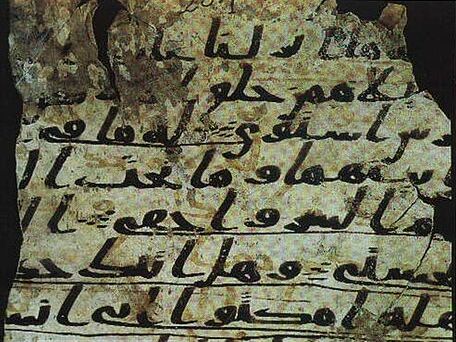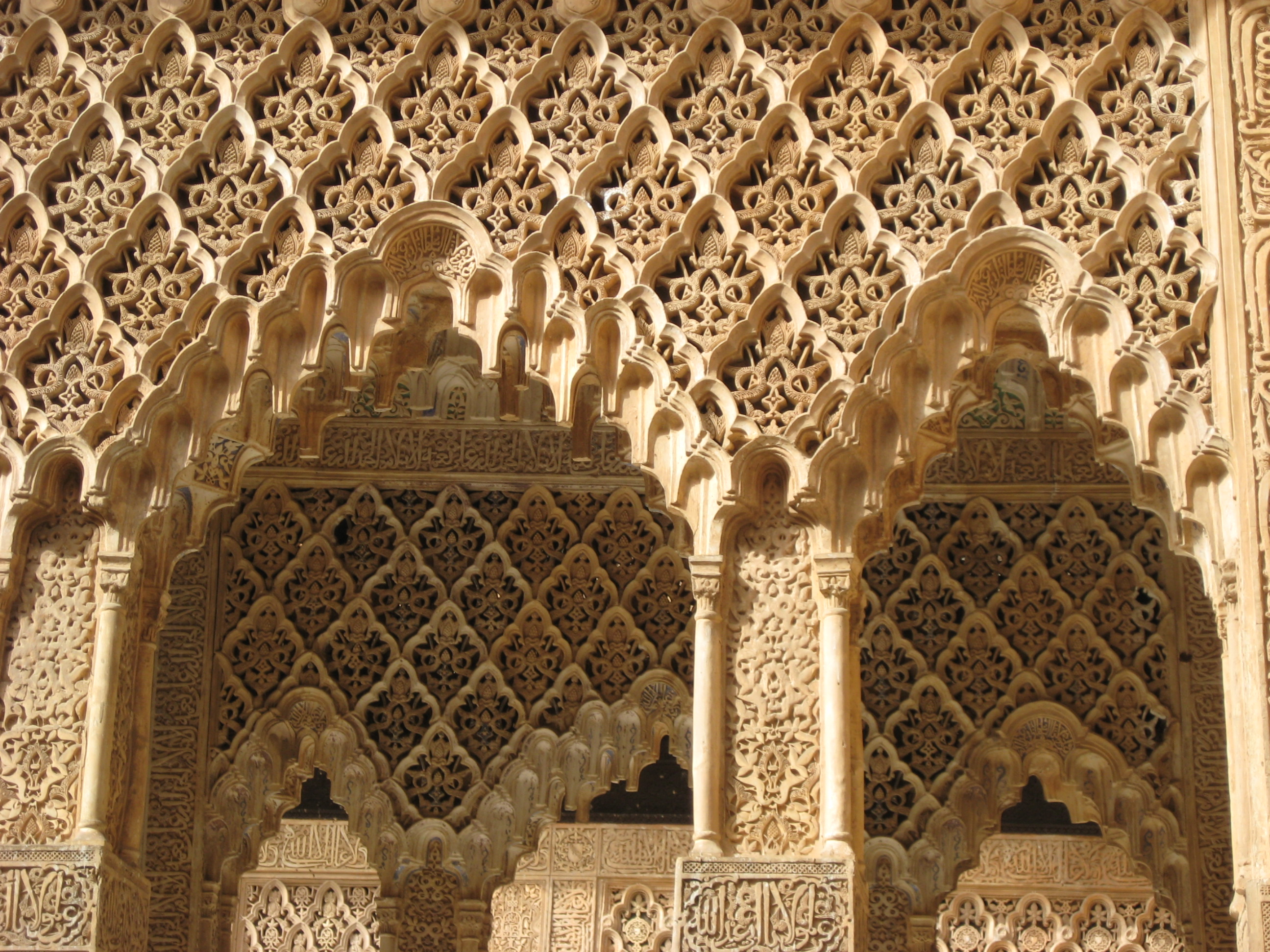|
Qadad
''Qadad'' ( ''qaḍāḍ'') or ''qudad'' is a waterproof plaster surface, made of a lime plaster treated with slaked lime and oils and fats. The technique is over a thousand years old, with the remains of this early plaster still seen on the standing sluices of the ancient Marib Dam. Volcanic ash, pumice, scoria (), in the Yemeni dialect, or other crushed volcanic aggregate are often used as pozzolanic agents, reminiscent of ancient Roman lime plaster which incorporated pozzolanic volcanic ash. Due to the slowness of some of the chemical reactions, ''qadad'' mortar can take over a hundred days to prepare, from quarrying of raw materials to the beginning of application to the building. It can also take over a year to set fully. In 2004, a documentary film ''Qudad, Re-inventing a Tradition'' was made by the filmmaker Caterina Borelli. It documents the restoration of the Amiriya Complex, which was awarded the Aga Khan Award for Architecture in 2007. Traditional prepa ... [...More Info...] [...Related Items...] OR: [Wikipedia] [Google] [Baidu] |
Lime Plaster
Lime plaster is a type of plaster composed of sand, water, and lime, usually non-hydraulic hydrated lime (also known as slaked lime, high calcium lime or air lime). Ancient lime plaster often contained horse hair for reinforcement and pozzolan additives to reduce the working time. Traditional non-hydraulic hydrated lime only sets through carbonatation when the plaster is kept moist and access of CO2 from the air is possible. It will not set when submersed in water. When a very thick layer or several layers are applied, the lime can remain soft for weeks. The curing time of lime plaster can be shortened by using (natural) hydraulic lime or adding pozzolan additives, transforming it into artificially hydraulic lime. In ancient times, Roman lime plaster incorporated pozzolanic volcanic ash; in modern times, fly ash is preferred. Non-hydraulic lime plaster can also be made to set faster by adding gypsum. Lime production for use in plastering home-made cisterns (in making them im ... [...More Info...] [...Related Items...] OR: [Wikipedia] [Google] [Baidu] |
Pozzolan
Pozzolans are a broad class of siliceous and aluminous materials which, in themselves, possess little or no cementitious value but which will, in finely divided form and in the presence of water, react chemically with calcium hydroxide (Ca(OH)2) at ordinary temperature to form compounds possessing cementitious properties. The quantification of the capacity of a pozzolan to react with calcium hydroxide and water is given by measuring its pozzolanic activity. ''Pozzolana'' are naturally occurring pozzolans of volcanic origin. History Mixtures of calcined lime and finely ground, active aluminosilicate materials were pioneered and developed as inorganic binders in the Ancient world. Architectural remains of the Minoan civilization on Crete have shown evidence of the combined use of slaked lime and additions of finely ground potsherds for waterproof renderings in baths, cisterns and aqueducts. Evidence of the deliberate use of volcanic materials such as volcanic ashes or tuffs b ... [...More Info...] [...Related Items...] OR: [Wikipedia] [Google] [Baidu] |
Great Mosque Of Sana'a
The Great Mosque of Sana'a (, ) is an ancient mosque in Sana'a, Yemen, and one of the oldest mosques in the world. The mosque is said to have been founded in the early Islamic period, suggested to be in 633. While the precise date of construction is unknown, the earliest recorded renovations occurred under Caliph al-Walid I in the early 8th century, implying a possible earlier date of construction. The mosque was reportedly built in part from spolia from the Himyarite-era Ghumdan Palace and from the Axumite Christian Church of al-Qalis that formerly occupied the site. The Great Mosque is the largest and most notable of over one hundred mosques in the Old City of Sana’a.Smith, G.R., “Ṣanʿāʾ”, in: Encyclopaedia of Islam, Second Edition, Edited by: P. Bearman, Th. Bianquis, C.E. Bosworth, E. van Donzel, W.P. Heinrichs. Consulted online on 08 December 2020 First published online: 2012 First print edition: , 1960-2007 The building has undergone renovations in the 8th c ... [...More Info...] [...Related Items...] OR: [Wikipedia] [Google] [Baidu] |
Yeseria
Stucco decoration in Islamic architecture refers to carved or molded stucco and plaster. The terms "stucco" and "plaster" are used almost interchangeably in this context to denote most types of stucco or plaster decoration with slightly varying compositions. This decoration was mainly used to cover walls and surfaces and the main motifs were those predominant in Islamic art: geometric, arabesque (or vegetal), and calligraphic, as well as three-dimensional '' muqarnas''. Plaster of gypsum composition was extremely important in Islamic architectural decoration as the relatively dry climate throughout much of the Islamic world made it easy to use this cheap and versatile material in a variety of spaces. Stucco decoration was already used in ancient times in the region of Iran and the Greco-Roman Mediterranean. In Islamic architecture, stucco decoration appeared during the Umayyad period (late 7th–8th centuries) and underwent further innovations and generalization during the ... [...More Info...] [...Related Items...] OR: [Wikipedia] [Google] [Baidu] |
Amiriya Madrasa
Al-Amiriya () is a 16th-century madrasa (educational institution) located in Rada, Yemen. It is under consideration for inscription as a UNESCO World Heritage Site.The Madrasa Amiriya of Rada - UNESCO World Heritage Centre Retrieved 2009-03-25. It was built in 1504 and is an example of the architecture of , Yemen. The monument was in poor condition until 1978 when Iraqi-born archaeologist Selma Al-Radi saw it and enlisted financial help from foreign missions to restore it in a more than twenty-year effort which she led. Significance |
Suet
Suet ( ) is the raw, hard fat of beef, lamb or mutton found around the loins and kidneys. Suet has a melting point of between and solidification (or congelation) between . Its high smoke point makes it ideal for deep frying and pastry production. The primary use of suet is in tallow, although it is also used as an ingredient in cooking, especially in traditional baked puddings, such as British Christmas pudding. Suet is rendered into tallow by melting and extended simmering, followed by straining, then cooling. The process may be repeated to refine the product. Etymology The word ''suet'' is derived from Anglo-Norman , from Old French , from Latin (' tallow', 'grease', 'hard animal fat'). ''Sebum'' is from the Proto-Indo-European root ('pour out, trickle'), so it shares a root with ''sap'' and ''soap''. Use In cuisine As suet is the fat from around the kidneys, the connective tissue, blood and other non-fat content must be removed. It must be refrigerated ... [...More Info...] [...Related Items...] OR: [Wikipedia] [Google] [Baidu] |
Rada'a District
Rada'a district () is a district of the Al Bayda Governorate, Yemen. As of 2003, the district had a population of 56,382 inhabitants. The district's largest city is Rada'a, east of Dhamar, a city renowned for its 16th-century ‘Amiryia Madrasa and mosque A mosque ( ), also called a masjid ( ), is a place of worship for Muslims. The term usually refers to a covered building, but can be any place where Salah, Islamic prayers are performed; such as an outdoor courtyard. Originally, mosques were si .... Climate References External links Districts of Al Bayda Governorate {{Yemen-geo-stub ... [...More Info...] [...Related Items...] OR: [Wikipedia] [Google] [Baidu] |
Lime Mortar
Lime mortar or torching is a masonry mortar (masonry), mortar composed of lime (material), lime and an construction aggregate, aggregate such as sand, mixed with water. It is one of the oldest known types of mortar, used in ancient Rome and ancient Greece, Greece, when it largely replaced the clay and gypsum mortars common to ancient Egyptian construction. With the introduction of Portland cement during the 19th century, the use of lime mortar in new constructions gradually declined. This was largely due to the ease of use of Portland cement, its quick setting, and high compressive strength. However, the soft and porous properties of lime mortar provide certain advantages when working with softer building materials such as natural stone and terracotta. For this reason, while Portland cement continues to be commonly used in new brick and concrete construction, its use is not recommended in the repair and Building restoration, restoration of brick and stone-built structures origin ... [...More Info...] [...Related Items...] OR: [Wikipedia] [Google] [Baidu] |
Mudhaffar Mosque
The Mudhaffar Mosque () is located in the center of the old part of the city of Taiz, Yemen. Built in the thirteenth century, the mosque is part of the oldest functioning public bath in Yemen. It is one of the two beautiful mosques in Yemen. It is one of the largest mosques of the old city and many of the residents attend the Friday prayers (Jumu'ah) there. The mosque was also home to a ''madrassa'' (Islamic school) that educated many Islamic scholars. Visitors from rural areas often traveled to use the mosque's baths, either for healing or as a ritual before a wedding. See also * Islam in Yemen * List of mosques in Yemen This is a list of mosques in the Republic of Yemen, in the South Arabia, southern part of the Arabian Peninsula. See also * List of mosques in Sana'a * Islam in Yemen * Lists of mosques References External links {{DEFAULTSORT:Mosqu ... References Mosques in Yemen Taiz {{Yemen-mosque-stub ... [...More Info...] [...Related Items...] OR: [Wikipedia] [Google] [Baidu] |
Ashrafiya Mosque
Madrasa and Mosque of Al-Ashrafiya or Al-Ashrafiya Mosque () is a historical madrasa-mosque located in the old city of Taiz, Yemen at the foot of Mount Sabr in the southwestern part of the city. It is arguably the most notable preserved artifact of Taiz, given its distinct and beautiful design. It is considered to be one of the most important centers in the Islamic history of Yemen along with its complement, the Mudhaffar Mosque. It was supposedly built in two stages: (1) by Sultan Al-Ashraf Umar II (1295-6) or 800 Hijri, (2) by Sultan Al-Ashraf Isma'il I (1377-1400) and opened in 1382 or 803 Hijri. This compound can be found in the neighborhood of Ashrafiya, surrounded by a number of other locations and overlooks the Cairo Citadel. The mosque accommodates approximately 120 to 800 worshippers. Architecture The material used in the mosque construction is qadad; it's made of a lime plaster treated with slaked lime, oils and water. Since the mosque was built on top of storm drain ... [...More Info...] [...Related Items...] OR: [Wikipedia] [Google] [Baidu] |
Taiz
Taiz () is a city in southwestern Yemen. It is located in the Yemeni highlands, near the port city of Mocha on the Red Sea, at an elevation of about above sea level. It is the capital of Taiz Governorate. As of 2023, the city has an estimated population of approximately 940,600 residents making it the third largest city in Yemen. History Medieval The first reference to Taiz in historical sources dates back to the first half of the 12th century CE, when the sultan of the Sulayhid dynasty, Abdullah bin Muhammad al-Sulayhi, built the Al-Qahira Castle. Taiz first became an urbanized area during the days of his brother Ali bin Muhammad al-Sulayhi. The next historical reference to Taiz mentioned that Queen Arwa al-Sulayhi's minister, Prince Al-Mansur bin Al-Mufaddal bin Abi Al-Barakat, sold many of the country's castles and cities - except for the fortresses of Taiz and Sabr - to the ruler of Aden Al-Zari'i, the preacher Muhammad Ibn Saba, in exchange for one hundred thousand din ... [...More Info...] [...Related Items...] OR: [Wikipedia] [Google] [Baidu] |



